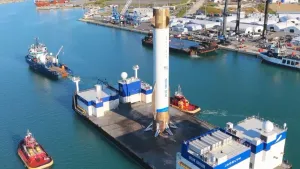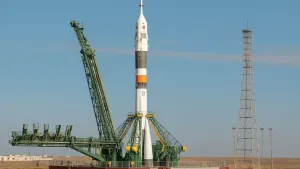Astrolab, a space-mobility startup based in California, announced the FLEX Rover, a large multi-purpose vehicle designed for sustained operations on the Moon. The company calls FLEX its most capable rover to date and describes it as a platform that can support cargo delivery, site preparation, scientific missions and crew mobility.
According to Astrolab, FLEX can carry up to 1,600 kilograms of equipment and operate in the challenging terrain and temperature conditions expected at the lunar South Pole.
What the Rover Is Built To Do
Astrolab designed FLEX for missions where mobility, adaptability and load capacity determine how much work astronauts and robotic teams can complete on the surface. The rover uses a modular payload interface that allows customers and mission partners to attach a variety of tools, scientific packages and logistics equipment.
Its architecture supports both crewed and remote-operated missions, which means it can work before human arrival, during surface stays and after crew departures.
Meet FLEX, soon to be the largest and most capable rover to operate on the lunar surface.
— Astrolab (@Astrolab_Space) November 20, 2025
Historically, planetary rovers have been bespoke, put into operation roughly once per decade. Custom-designed around a particular payload, traditional rovers can cost billions of dollars to… pic.twitter.com/KtIgJYaLLH
The company highlights that this modular approach is intended to lower development costs for participating mission partners and open the door for repeated use across several campaigns rather than single-mission deployments.
Background And Development
Astrolab began developing surface-mobility concepts in 2020, focusing on hardware that could support NASA’s push toward long-term lunar activity.
The FLEX Rover follows earlier prototypes that the company tested in desert environments to simulate lunar terrain. The design aligns with NASA’s wider Artemis programme, which aims to build infrastructure around the lunar South Pole.
Astrolab’s payload system also connects to the growing commercial infrastructure around lunar exploration. Companies involved in landers, communications and science missions increasingly rely on mobile surface systems that can move instruments, assemble equipment and support field operations.
FLEX enters this market as a rover intended for both commercial and government customers.
Things To Note
A rover with the capacity and adaptability of FLEX could help future missions transport structural elements, scientific instruments and supplies across wider distances than earlier robotic platforms. Its design supports activities such as resource surveys, construction assistance and mobility for suited astronauts during surface campaigns.
Astrolab will still need to demonstrate reliability in extreme cold, rough terrain and long mission durations. Integration with landers, launch vehicles and communications systems will be key factors that determine whether FLEX becomes part of early Artemis-aligned missions or commercial expeditions.
What's Ahead
Astrolab plans to release more information on mission partnerships and delivery timelines as it works toward its first lunar deployment. Upcoming updates are expected to include detailed performance demonstrations, payload partner announcements and integration milestones with lander providers.
These signals will help shape expectations around whether FLEX can become a shared mobility platform for lunar operations.
Conclusion
Astrolab positions FLEX as a rover built for the practical demands of sustained lunar activity. Its load capacity, modular architecture and ability to support both crewed and robotic missions reflect a push toward more functional and commercially accessible surface systems.
The next phase will show how rapidly the company can move from development to operational readiness as lunar exploration expands.






